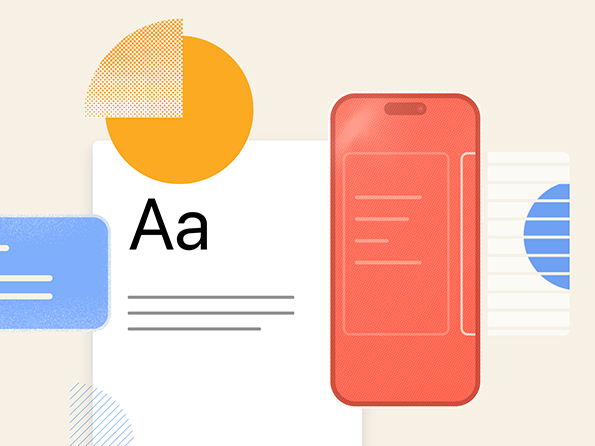This website uses cookies so that we can provide you with the best user experience possible. Cookie information is stored in your browser and performs functions such as recognising you when you return to our website and helping our team to understand which sections of the website you find most interesting and useful.
Faster Website Launches. Better Results.
A Beginner’s Guide to Growth-Driven Design

What if we thought of a website redesign more like a software development project? Instead of perfecting every last detail of every page, let’s go to market much faster with an MVP (software parlance for “minimum viable product”) and begin optimizing it for performance and conversion right out of the gate.
That’s the idea behind Growth-Driven Design (GDD), a more agile approach to web design that may be a better fit for your project than the traditional website redesign model.
GDD — a term coined by HubSpot but applicable to any website project regardless of platform—is built upon the Pareto Principle (or 80/20 rule as it’s also called). The gist of it is this:
- 80% of your users only see 20% of your website
- 20% of your website is responsible for 80% of traffic and conversion
A GDD website project focuses on launching the 20% of elements that will produce the maximum impact as quickly as possible. Once this “launch pad” website is up and collecting user behavior patterns, you establish a cadence of planning and deploying incremental site updates that are both timely and backed by real user data.
Growth-Driven Design is comprised of three key stages: Strategy and Planning, Launch Pad Website, and Continuous Improvement.
Strategy and Planning:
Successful websites begin with a focused growth strategy. This stage involves understanding the business objectives and user needs, and developing a plan for the website. The five main steps in the phase are:
- Define the goals of your website
- Audit your existing site
- Build user personas
- Use your research to brainstorm a wish list for your website
- Sort the list into must-haves vs. nice-to-haves (and prioritize the former)
Launch Pad Website:
With the go-forward strategy for the site locked in, you can move on to the design and build. Again, the launch pad website is a minimal version of your future website that serves as a jumping-off point. It provides the basic functionality and structure needed to start gathering data and testing assumptions. Most importantly, it’s doing so on the pages already identified as the most crucial for success.
The goal of the launch pad website is to quickly build a website that looks and performs better than what you have today, but is not your final product. It should only include the most important pages and features, as well as advanced tracking software such as heatmaps and session recordings. You will need to install advanced tracking software as your launch pad is the foundation from which you’ll collect user data and other analytics to inform future content, features, and design layouts.
Continuous Improvement:
As soon as the launch pad (or “MVP”) goes live, you can start identifying the high-impact actions to take to improve the success of your site. The data will tell you how the new site is performing against the goals you set in the strategy phase. The website is continually updated and improved over time, with regular testing and data analysis used to inform future updates.
Learn what works (and what doesn’t). Then repeat this cycle to continuously adapt and improve the site as your business, the market, and web technology change over time.
Benefits of Growth-Driven Design:
This approach has many benefits. According to a Hubspot survey, organizations that invest in a GDD mindset report the following within 6 months of deployment (when compared to the traditional web design model):
- 16.9% more leads
- 11.2% more revenue
- 14.1% more visitors
This approach ensures that the website remains relevant and effective long beyond the standard 3-4 year shelf life of the average redesign.
Businesses need to respond quickly to changes in the market and customer behavior. By continually testing and optimizing the website, they can identify what is and what isn’t working, and make changes as needed. GDD helps minimize risk by allowing businesses to test and optimize the website on a smaller scale before investing in a full redesign. A traditional website can cost $50-$150K, takes 6-12 months, and the budget is spent upfront. On the other hand, a launch pad site costs a fraction of that and can be launched in about 2-3 months. The remaining budget is then shifted toward continuous optimization.
Is Growth-Driven Design for Everyone?
In short, no.
Over the years, we have found that many clients want the website launch to be a “moment” rather than an iterative process — especially when the site redesign is part of a larger, full-scale rebrand (Cole Schotz, for example). Some companies are used to or simply prefer projects with a finite ending.
Some websites are intentionally short-lived (e.g. campaigns), and ongoing optimization is a non-issue. Sometimes only a very small website (or even a one-pager) is required, especially for brand-new organizations (FFLG, for example). In other cases, client teams aren’t built for the kind of speed required to get a website launched in 3 months. Lastly, traditional web design can allow for a more fixed budget upfront, which may be required for some organizations — especially those with strict purchasing departments.
Just this year, we’ve had clients say “Why would anyone ever consider it doing it any other way?” in reference to both approaches. Ultimately, the decision of whether to choose GDD or traditional web design will depend on the goals, needs, and comfort of the organization.
However, Growth-Driven Design is a powerful approach that can help businesses deliver better results, faster. By focusing on continuous improvement and data-driven decision-making, businesses can ensure that their website remains relevant and effective, and that they are getting the best return on their investment.

About north street
We engineer the thoughtful transformation of great organizations. Our proven process helps us understand what your competitors are doing right — and wrong. Want to learn more? Let’s chat.



























